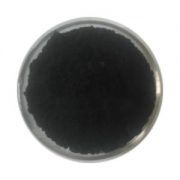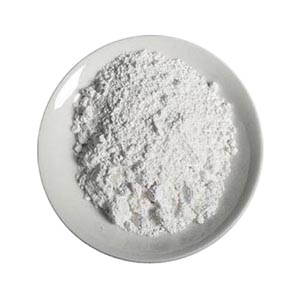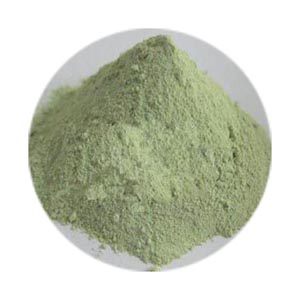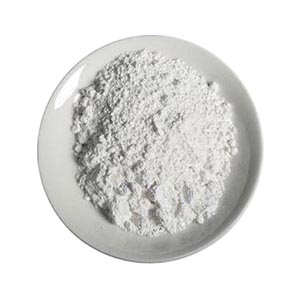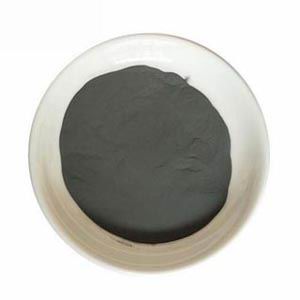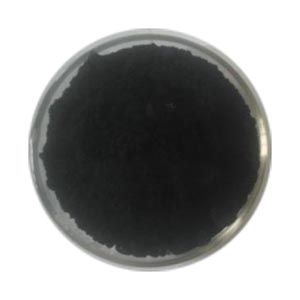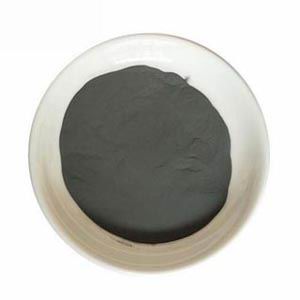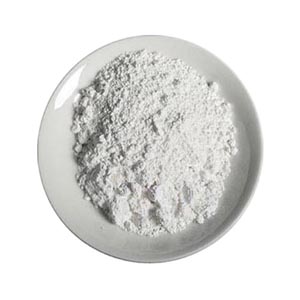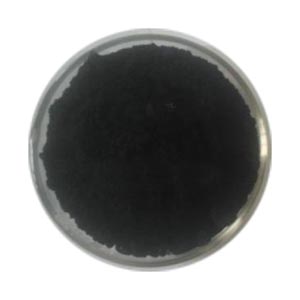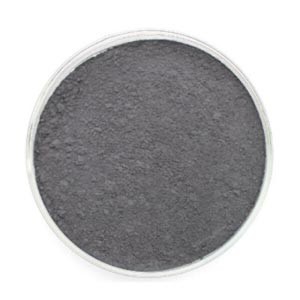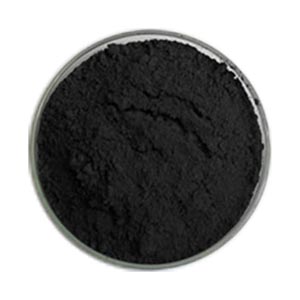
Titanium black Ti4O7
Blue Black electrically conductive powder
Produced by proprietary process
High Ti407 Content
Structurally Stabilized Sheer Planes
High Resistance to oxidation and corrosion
in acid and base solutions
Stabilized Magneli Phase Titanium Oxide
Electrically Conductive Ceramic Powder
D50 particle size: 80nm, 20um
- 描述
- Inquiry
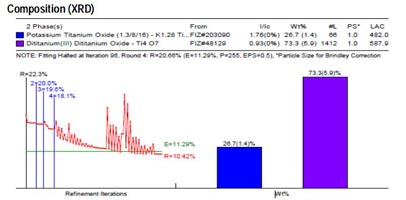
Titanium black is a very good black electrode material. titanium black can protect the poles of the battery, as a bipolar battery material and LED black matrix material. Ti4O7 Information: Pigment Properties: Black Powder Chemical Name: Black Titanium, Titanium Black, Black Titanium Powder, Ti4O7 English Name: Tilox Black; titanium black; Titan black; magneli phase Titanium Dioxide Powder Material is the world On the first black titanium metal oxide, it shows the unique physical properties of various functions. By titanium dioxide modification, titanium oxide has a smaller particle size and a higher hiding power
Feature:
Tilox Black is a very active new energy functional materials;
Tilox Black crystal structure is sodium chloride type cubic crystal and rutile type square crystal mixed powder;
And iron black is the same, titanium oxide is also a non-toxic pigments;
Tilox Black with titanium dioxide pigment hiding power, dispersion, excellent heat resistance, acid resistance, alkali resistance, solvent resistance is good;
Tilox Black has high thermal stability and good dispersibility in water and resin.
Titan black is a pure inorganic inorganic material, titanium oxide material environmentally friendly non-toxic, in line with food safety standards, will not damage the skin, in line with the development needs of low-carbon economy;
Titan black used as a photocatalyst can be widely used in electronic energy storage industry;
Ti4O7 has two models for energy storage materials, titanium oxide is an electrode material.
Highly insulating titanium black has also been successfully developed
Physical performance
In terms of physical properties, Magneli phase titanium oxide material, at room temperature has good electrical conductivity. Especially Ti4O7, is the best conductivity of a phase, the single crystal conductivity of 1500Scm-1. The bulk density is 3.15 g / cm-3-3.18 g / cm-3
Chemical properties
In the chemical properties, Magneli phase titanium oxide material, compared with the general industrial electrode materials, with high chemical stability and corrosion resistance. It is documented that the static corrosion rate of Magneli phase titanium oxide is only 0.019 g / m2 / day at 50 ° C and 42% H2SO4. On the other hand, Magneli phase titanium oxide has good electrochemical properties. Experiments show that at room temperature, the operating current control in the 5-20mA / cm2, the material can be used as a positive electrode can also be used as a negative electrode for hydrogen evolution reaction, and hydrogen evolution oxygen overpotential high, such as in 1M H2SO4, At room temperature, the oxygen current potential can be as high as 5 volts at medium current density
Applications:
Lead-acid battery applications:
1) to improve the formability of the positive electrode active material and the utilization of the active material. Since the conductive ceramic-titanium oxide (Ti4O7) can enhance the bonding force with PbO2 and maintain the pore shape and porosity during the charging and discharging process, the moldability of the positive electrode active material and the utilization ratio of the active material are improved. With a small amount of titanium oxide (Ti4O7) fiber added in the automotive flat-panel battery, you can increase the battery capacity of 15-17%.
Battery area:
Lithium battery: as a cathode instead of graphite can reduce the charge and discharge cycle of the capacitor attenuation;
Fuel cell, zinc – air battery and liquid battery: Because of its high conductivity and corrosion resistance, is very promising electrode and bipolar material;
Chemical industry:
Because of its excellent chemical stability and conductivity, can be used for chlor-alkali industry, chlorate manufacturing, dichromic acid preparation and organic synthesis;
Electric metallurgy field:
In high current density, high acid conditions are not passivated without corrosion and better than graphite and titanium, as the electrode for electrodeposited zinc, metal recovery, electrolytic manganese oxide, metal foil production and printing circuit board etching solution reuse deal with;
Electroplating area:
Because the electrolyte contains fluorine and other corrosive substances, commonly used anode is very easy to deteriorate, and the oxidation of titanium oxide electrode over-potential, corrosion resistance, wear resistance, electrode size and stability;
Environmental protection and water treatment areas:
Because of the high oxygen evolution potential of titanium oxide electrode, it is widely used in electrocatalytic degradation of organic pollutants and landfill leachate, electrochemical treatment of phenol wastewater, printing and dyeing wastewater treatment, oilfield wastewater treatment, hospital sewage treatment and Electrolysis of sea water, desalination, electrolytic water disinfection and ozone manufacturing;
相关产品
-
Ammonium vanadate
Other name: Ammoniummetavanadate;Ammonium Vanadate(V); ammonium trioxovanadate; hydroxy(dioxo)vanadium ammoniate (1:1); ammonium oxido(dioxo)vanadium
CAS no. : 7803-55-6
EINECS no. : 232-261-3
Molecular formula: NH4VO3
Molecular weight: 116.9776
Melting point: 200 ℃
Solubility in water: 5.1 g/L (20 ℃)
PSA:57.20000
LogP:0.01980
-
Zirconium tungstate
Other name:
Tungsten zirconium oxide ; Ditungsten zirconium octaoxide
CAS no. : 16853-74-0
EINECS no. : 240-876-3
Molecular formula: Zr(WO4)2
Molecular weight: 586.8992.
-
Ammonium niobium oxalate
English alias: Ethanedioic acid ammonium niobium (5 +) salt , Ammonium niobate (v) oxalate hydrate
CAS no. : 168547-43-1
Molecular formula: C4H4NNbO9
Molecular weight: 302.98 g / mol
-
Tantalum silicide
CAS no. : 12039-79-1
EINECS no. : 234-902-2
Molecular formula: H6Si2Ta.
Molecular weight: 243.16654
-
Niobium diselenide
Other name: Niobium(IV) selenide, Niobium selenide; Columbium selenide; diselenoxoniobium; niobium(+4) cation; selenium(-2) anion
CAS no. : 12034-77-4
EINECS no. : 234-811-8
Formula: NbSe2.
Molecular weight: 250.8264.
Density (g/mL,25) : 6.3
-
Vanadate zirconium
Molecular formula: ZrV2O7.
Molecular weight: 315.7.
CAS no. : 13981-20-9
Appearance: yellow powder
Used in functional ceramics, structural ceramics and other aspects as pigments.
Description: The use of temperature: 400-1080 ℃
The coefficient of linear expansion: – 10 x 10-6 ℃ – 1 -
Tantalum nitride
Performance characteristics: high purity, no impurity phase detected by XRD
Tantalum nitride (TaN) has superior physical, chemical and mechanical properties (such as high hardness, wear resistance, chemical inertness, thermal stability and low resistance temperature coefficient), and is widely used in wear-resistant coatings, film resistors and diffusion barriers in integrated circuits -
Niobium metaphosphate
English name: Niobium metaphosphate
Chemical formula: Nb (PO3) 5
Molecular weight: 487.90
Properties: sodium biphosphate glass, white powder, insoluble in water, PH value: 3.8
-
Titanium carbonitride
English alias: TITANIUM CARBONITRIDE (7:3); TI (C/N) 30/70 a; TI (C/N) 30/70 b; TI (C/N) 30/70 C; TI (C/N) 50/50 a; TI (C/N) 50/50 b; TI (C/N) 50/50 C; Titanium carbon nitride; TiCN
CAS no. : 12654-86-3
Formula: TiCN
Molecular weight: 121.75
MDL: MFCD01868685
Density: 5.08 g/mL at 25 ℃ (lit.)
Melting point: > 350 ℃ (lit.)
-
Molybdenum disilicide
Other name: Molybdenum silicide
Molecular formula: MoSi2
CAS number: 12136-78-6
Molecular weight: 152.11
Melting point: 2030 ° C
Density: 6.24g/cm3

